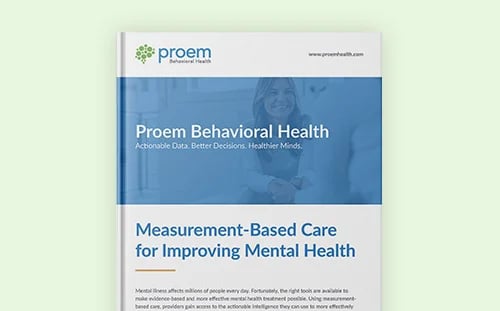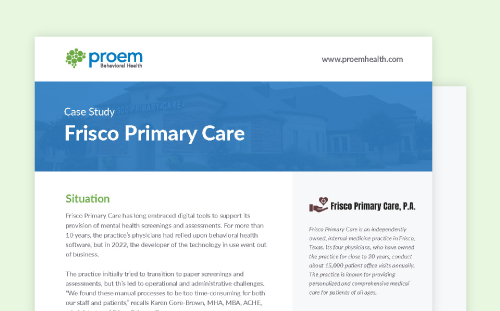
Comorbid bipolar disorder and substance abuse presents a treatment challenge for any SUD provider. The two conditions have a complex relationship, and the interplay between diagnoses differs for every patient. Effective treatment requires SUD clinics to consider these comorbid cases and how they present. The more clinicians know about the interactions between conditions, the better their chances of helping clients achieve recovery. Here are five important points to know about co-occurring bipolar disorder and substance abuse that can help you improve the treatment and support of individuals with these conditions.
1. Bipolar and Substance Abuse Frequently Co-Occur
Co-occurring mental health and addiction affects nearly 18 million people across the United States. The connection is particularly strong between bipolar disorder and substance abuse.
According to the Substance Abuse and Mental Health Services Administration (SAMHSA), co-occurring SUD is more common among patients with bipolar disorder than those with any other mental illness. Studies have placed the lifetime development of SUD in patients with bipolar disorder between about 22% and 59%.
For some individuals, substance use may be a risk factor and potential predictor of bipolar disorder. In a recent study review, SUD increased the risk of bipolar disorder in 43% to 56% of studies, with cannabis being the most commonly co-occurring substance of abuse.
In other cases, a history of bipolar disorder may increase vulnerability to substance use and, ultimately, SUD. It can be difficult to pinpoint the cause of co-occurrence, especially in complex cases, but awareness of the connection can serve to guide treatment.
2. Manic Episodes Increase Substance Use Risk
Risky behavior is a well-known characteristic of a person experiencing mania. The manic state inhibits an individual’s judgment and reduces their inhibition, causing the person to make potentially dangerous choices.
Many individuals having a manic episode engage with substances as one of their chosen risks. This behavioral pattern may eventually progress into a diagnosable substance use disorder.
Research has shown that individuals who experience mania have more than eight times higher risk of substance dependence versus the overall population. Among individuals with hypomania, a characteristic of bipolar II, the risk of substance abuse issues is close to four times higher than that of a non-hypomanic person.
Individuals with a history of substance use disorder may be increasingly prone to mania-related risk-taking and a recurrence of SUD symptoms. In a test of risk-taking behavior, participants with bipolar disorder and substance abuse showed more signs of risk tolerance. Specifically, those with a bipolar disorder history correlated with a worse outlook and less resistance to loss than those without such a history.
SUD providers must be aware of this connection and commit to taking a substance use history of all individuals presenting with bipolar disorder.
3. Individuals with Bipolar Disorder May Self-Medicate
The distress of mania or depression may cause some individuals to seek relief by using alcohol and/or drugs. If substance use provides the promised comfort, temporarily alleviating symptoms such as agitation or anhedonia, the temptation to continue self-medicating is higher. In time, the pattern of substance use may develop into diagnosable SUD.
In one study, 41% of individuals with bipolar I disorder and nearly 35% of those with bipolar II disorder reported self-medicating with alcohol, drugs or both. Self-medication may also occur without a clinical diagnosis, requiring clinicians to watch for common signs.
Self-medication frequently complicates the diagnosis and treatment of bipolar disorder and substance abuse. First, the “effectiveness” of substance use may reduce motivation to abstain or even seek diagnosis. Also, research indicates that some individuals with bipolar disorder may turn to substances to experience the more “desirable” experience of mania, posing a challenge to clinicians seeking to motivate adherence to treatment.
Finally, the effects of cyclical substance use frequently resemble bipolar symptoms. Withdrawal may mimic or intensify the low energy and mood of depression, while the highs associated with certain drugs may present as mania.
4. Substance Abuse May Exacerbate Bipolar Symptoms
Self-medication is one of many explanations for substance use among individuals with bipolar disorder. Genetics or neurobiology may predispose some individuals to both conditions. Environmental factors, such as a history of stress or trauma, may prompt the development of these or other psychological diagnoses.
As in any scenario involving drugs or alcohol and mental illness, the effects of substances may increase symptom severity. Research has shown that when SUD is comorbid with bipolar disorder, there is a correlation with reduced success of medications, an overall poorer prognosis and an increased likelihood of suicidality.
Barriers to help-seeking and reduced treatment compliance may contribute to poorer outcomes, including increased hospitalization. Bipolar disorder screening must be a component of SUD treatment intake, just as alcohol and mental illness screening must go hand in hand.
5. Effective Treatment Addresses Bipolar and Substance Use Together
Research has repeatedly indicated that an integrated treatment approach is optimal for treating co-occurring bipolar disorder and substance abuse. Recent best practices have moved on from the goal of achieving zero use before treating mental illness, evolving toward a model that emphasizes the interaction between the two conditions.
SAMHSA recommends an integrated approach that focuses on the whole person, addressing the unique ways bipolar disorder and SUD interact in the individual. The patient learns of the relationship between the two conditions, including the importance of treating one to support recovery from the other.
Integrated treatment also supports progress and safety on a pharmacological level. Some treatment medications for bipolar disorder have proven effective at reducing substance use, while others have no effect or worsen alcohol outcomes.
Other medications, including the common mood-disorder drug bupropion, can have dangerous effects if the patient consumes alcohol or other substances while in treatment. Understanding the complete clinical picture helps SUD providers to develop the best treatment strategy and provide effective patient education that leads to increased engagement and treatment adherence.
Improve Patient Outlook and Outcomes with Effective Treatment Tools
Effective integrated treatment begins at the point of intake. Evaluating an incoming patient or client is complicated, but reliable substance use disorder assessment tools have improved the process significantly.
Proem is dedicated to making these licensed digital tools available to providers whose clients have or may have a substance use disorder, with or without co-occurring mental illness. Our single-platform behavioral health engine enables clinicians to easily integrate substance use screening tools into existing workflows. The electronic format also allows for seamless integration of mental illness screening, with or without SUD symptoms.
With Proem, it’s easier than ever to implement universal screening, evaluation and monitoring for co-occurring bipolar disorder and substance abuse. To find out how Proem solutions can help with better SUD outcomes, book a meeting.





.png)









